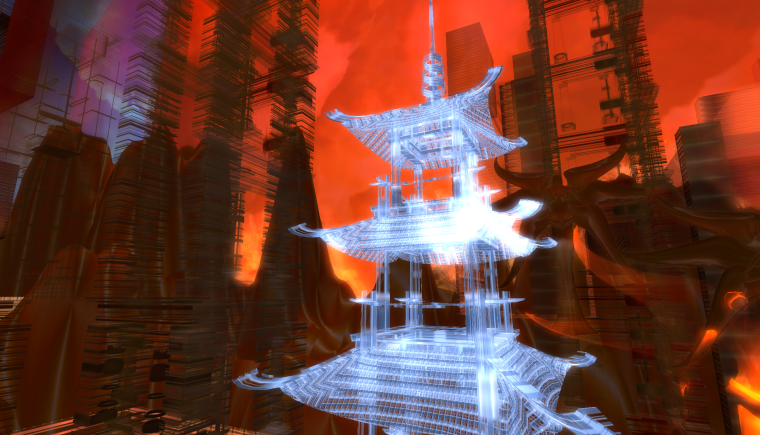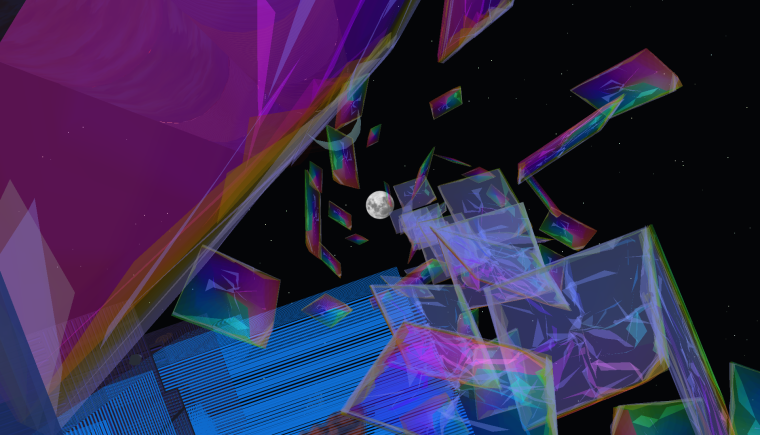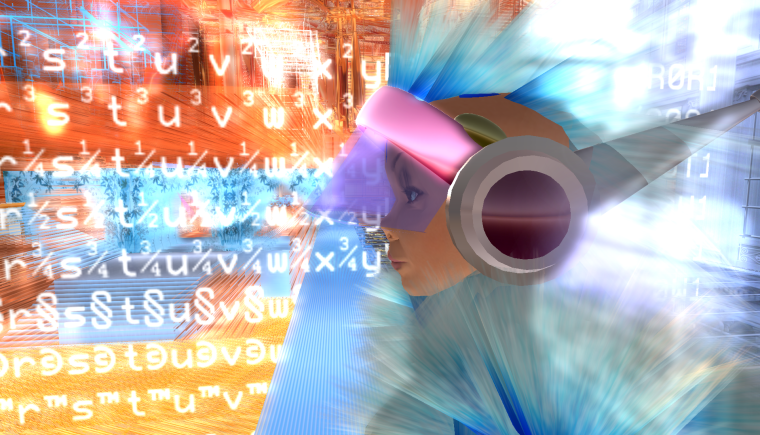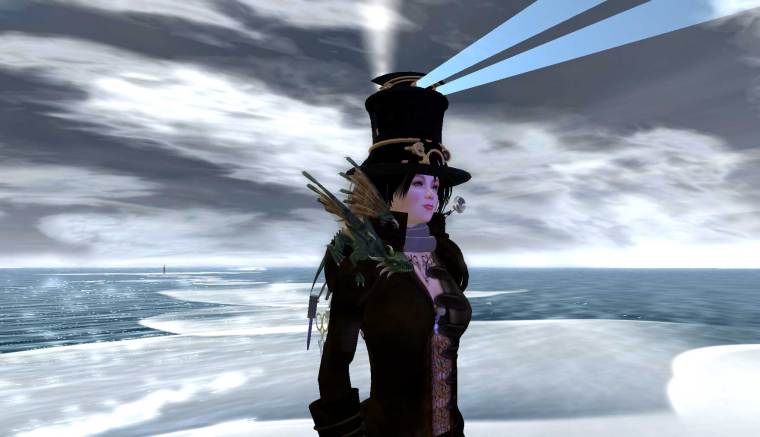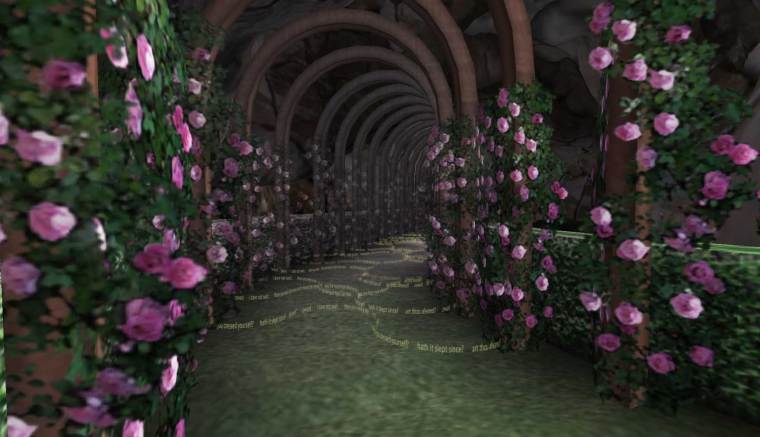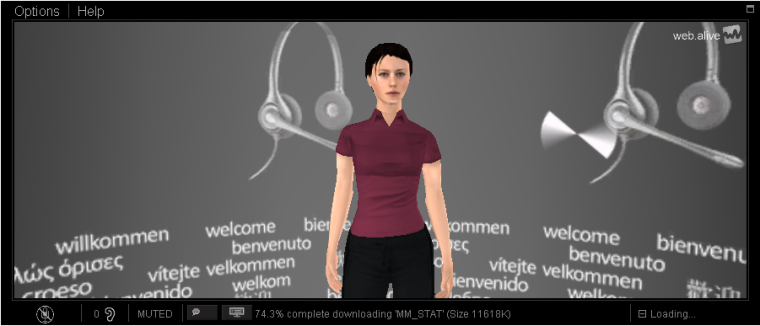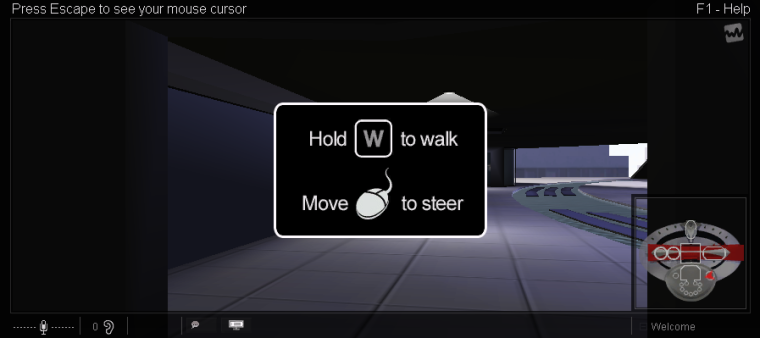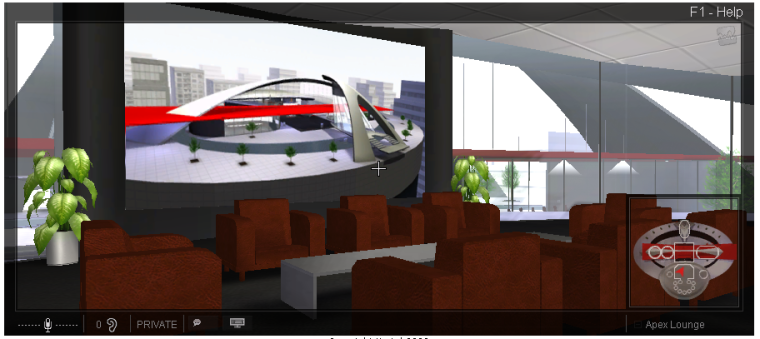I am on the second day of an Eve Online trial. While this is driving me a little crazy, it is also food for thought as it reminds me of my own Second Life (SL) newbie experience. As a SL user, or should I say ‘believer’, I find myself inevitably comparing Eve Online and Second Life. (By the way, I join the tribe of ‘SL Believers’ who all see what Second Life is in its current state whilst experiencing tantalizing glimpses of what it could be if it took a couple of shimmies to the left…)

Delving into Eve Online I find I must wade through quests that double up as tutorials to learn this complex game. Eve Online’s various controls and information features seem complicated to use and employ poor quality typography. The only way to begin to make sense of everything is via endless repetition. The same must be said of SL i.e. it also can only be understood by repetition but the various SL viewers try hard to reduce complexity.
Note I say Second Life viewers… there are so many that it is getting a little confusing. Which viewer shall I encourage new students to use? Which viewer do I know well enough to teach? The orientation stations I like to send students to have not updated themselves to explain Viewer 2. I am tempted to promote the Emerald viewer because that viewer is a logical evolution of the old SL viewer (which means many resident created orientation stations are still relevant). As I have a class coming up soon I decided to check out the official Viewer 2 tutorials and test the whole ‘newbie’ experience with Second Life for myself. My sign up for a new avi went very smoothly and I landed on Welcome Island where the Viewer 2 tutorials were excellent. However, I was stumped at the end of the tutorial when I found myself confronted by 4 destination choices: Shop, Explore, Socialize or Help. What to pick?
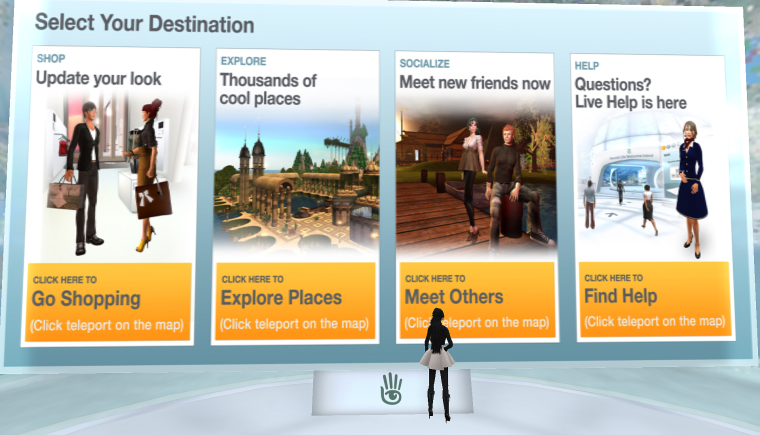
I opted for the first destination ‘Shop – Update your look’ and I was startled to discover that the ‘Go Shopping’ teleport placed me under the sea! I had to walk around a bit before locating a sad little dock area. This had about six items on display, all demo clothes for female avatars plus a 7-Seas fishing rod dispenser. I could purchase the clothes for L$25, very cheap (except when you are a newbie with no money). A miserable experience which made Dusan Writer’s recent post Show Up: Your Guide to Helping to Improve Second Life all the more relevant. Dusan quotes Oz Linden’s recent entreaty to SL residents to help Linden Labs by providing “productive useful input”. I hope it is productive to suggest that the initial destination areas for newbies in Second Life are perhaps the most important locations in this entire online 3D world? A decent web site checks all its links are working and pointing the user to the right content. Linden Labs is responsible for Welcome Island, this is the first point of contact for new customers; you would think they might check those 4 initial destination teleport sites are worth the visit? Eve Online might not have a very accessible dashboard but it does provide magnificent visuals for newbies with views of majestic planets, and graceful space rockets gliding across starlit heavens. At least while you are floundering around figuring out the controls you are doing it against a fabulous backdrop. On the other hand newbies to SL might be stunned into a state of boredom and confusion never to return having drowned their avis on a failed shopping trip.

Note to Oz: it seems once a destination is selected on Welcome Island there is no turning back?
Perhaps Linden Labs could allow newbies to get back to Welcome Island? At the moment you must pick one of those four destinations and good luck with that.
- A ‘back’ button would mean being able to get away from a bewildering location. (See update below).
- A ‘back’ button would make it possible for newbies to retake the Welcome Island tutorials.
- Consider creating high quality and engaging initial landing areas for newbies with helpers available to answer questions.
- Remember that newbies won’t be able to provide ‘productive useful input’ because they don’t know how to (or because they have left following their initial underwhelming experience and will never return).
I know it is unfair to compare a formula driven game like Eve Online with the free form world of Second Life but there are many common experiences relevant to both. After all, Second life was born out of the union between science fiction literature and the video gaming industry; and those not-in-the-know still think SL is a game. That debate aside, it is a simple fact that all online 3D worlds must manage this unavoidable ‘newbie’ introductory phase and create a positive experience for their customers. Newbies must:
- Learn the ‘logic’ of their new virtual environment.
- They must master their control panel or dashboard.
- They must absorb and understand unique vocabulary.
- They must master certain fundamental techniques so that they can travel around and communicate as soon as possible.
For an online 3D virtual environment to engage its customers successfully:
- It is essential that new users grasp these basics at a rewarding pace (not sure that the pace needs to be fast but it does need to be rewarding).
- The relationship between reward (the sense of ‘getting somewhere’ and of making purposeful progress) whilst learning the new application must counterbalance the inevitable frustrations of learning that same new application!
- If people enjoy the learning experience they will invest more time and money and willingly engage in the repetitious learning sequence until it eventually becomes second nature.
Now, I am off to fly my space ship over at Eve Online… just need to figure which is the front and which is the back end of my ship, that might help the steering thing? I will leave you with some happy snaps from Second Life’s Welcome Island.

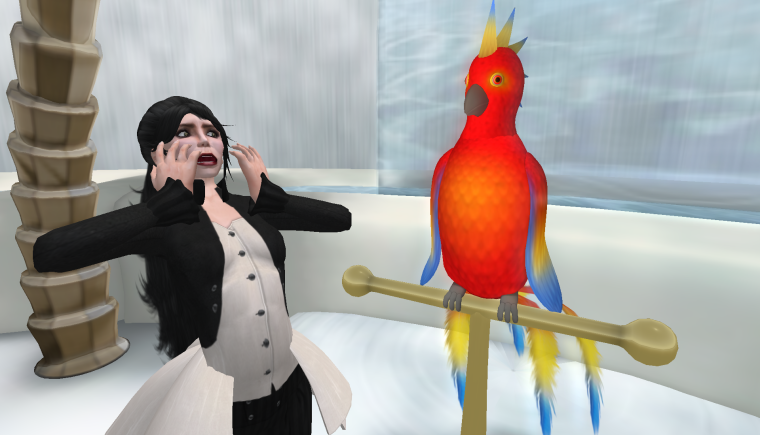
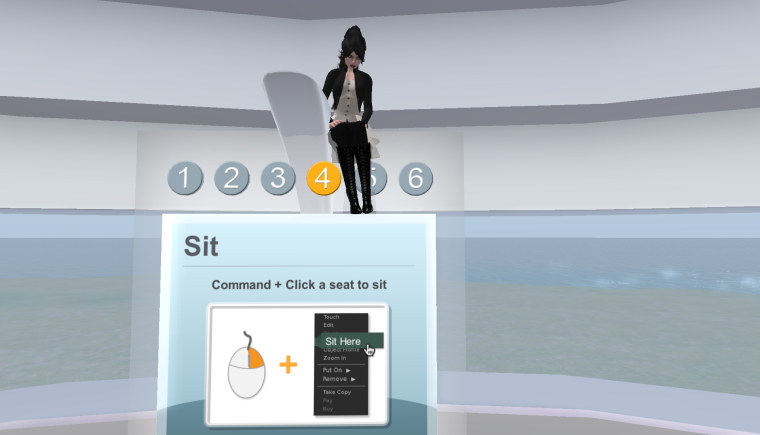
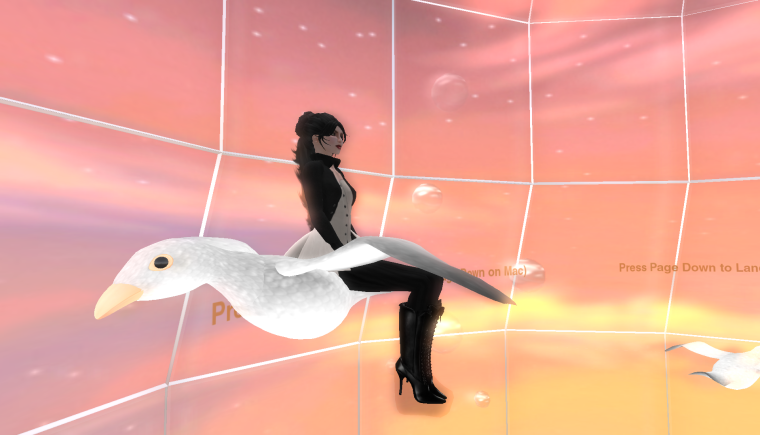
Update to this post.
Thanks to Doreen who left a comment on this blog I discovered that there is a ‘back’ button in Viewer 2. (This is a big help though the button could be improved a little.) It is useful for folks traveling around SL as it allows you to return to a location you have visited at an earlier time. However, it will not let newbies return to Welcome Island and requests that they head over to Help Island Public instead. This is probably aimed at preventing ner-do-wells from harassing newbies on Welcome Island (they can harass newbies on Help Island Public instead).
To make use of the back button:
Locate ‘Places’ in the control panel on the left of your screen and then select the tab ‘Teleport History’ and you will see the locations you previously visited. Teleport History is a little simplistic in that it will not return you to the precise place you teleported from, it always takes you to the official starting point of a location.


